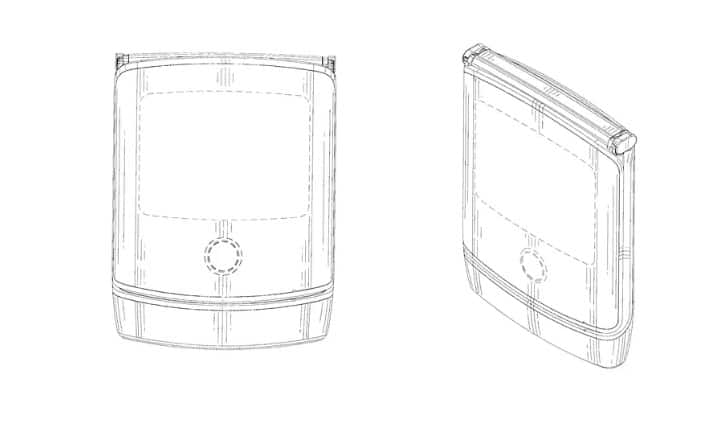

Following reports that Motorola would, too, get into the folding smartphone scene, the company today confirmed in an interview with Engadget that it is working on a folding device that would launch “[no] later than everybody else in the market.”
That puts Motorola’s timeline at sometime this year at the latest, with Samsung due to launch its Galaxy Fold in April and Huawei’s Mate X in mid-2019. Motorola usually holds an annual smartphone launch event around August. That time last year, it announced its 5G-ready Moto Z3 with the 5G Moto Mod, so we’ll likely get a glimpse at Motorola’s take on foldable screens this summer.
The Engadget interview also confirms that the design would not feature a screen on the outside of the device like we’ve seen with the Galaxy Fold and Mate X. A recent patent filing illustrates this folding mechanism as horizontal, much like Motorola’s RAZR flip phone.
“We have been testing a plastic OLED device with plastic film on top,” Motorola VP of Global Product Dan Dery told Engadget. “The fact that you’re touching [that kind of display] with your nails is scratching it. It has a short life right away, it starts dying the day you unpack it.”
Dery also notes that Motorola is exploring different takes on a foldable screen as well, including a singular screen that could fold twice. The intent is to minimize potential scratch-related defects. “When you know the scratching issues you would be facing, you will have something that is very rapidly not usable,” he said.
If the RAZR were to make a comeback, or if Motorola could figure out a way to make smartphones fold into smaller sizes, it’d be targeting a lot of different demographics: those who are ready to invest in foldable screens, those who miss the nostalgia of the RAZR phone, and those who’ve long wished smartphones just fit better in smaller pockets (myself and a million other women included.) Reviving old phones is also a popular strategy these days; HMD-owned Nokia last year re-released the updated Nokia 3310 and Nokia 8110 to much fanfare, though they were primarily advertised as novelty products than feature phones.